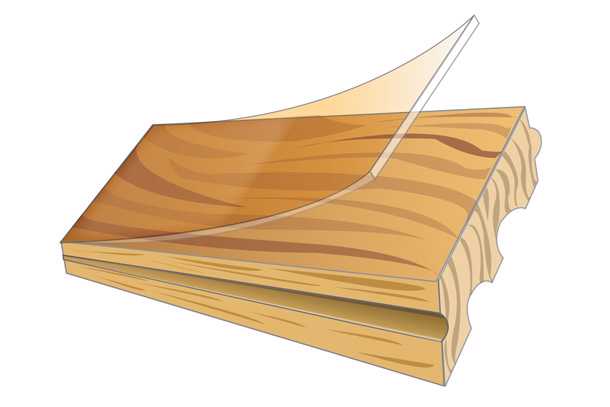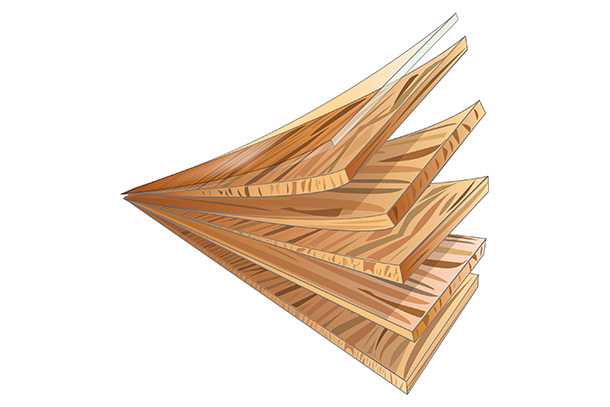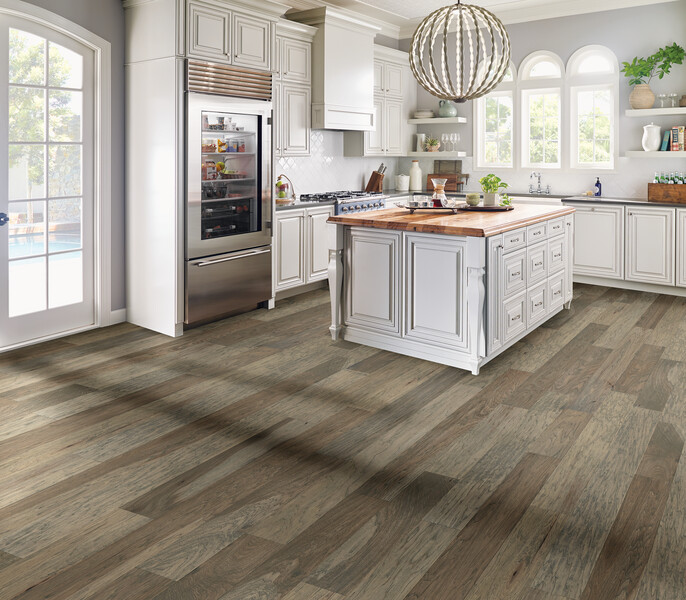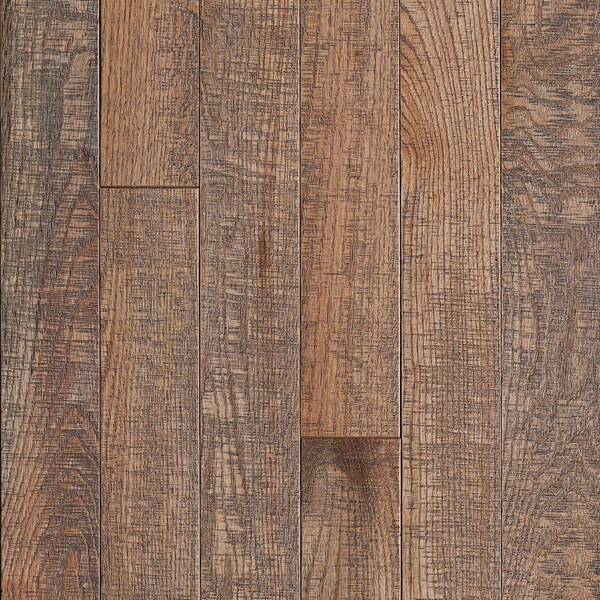Engineered or Solid Wood Flooring – Is One Better?
Let’s face it. You can’t beat wood flooring. But were you aware that there are different types of hardwood flooring?
When purchasing wood flooring, one essential consideration is whether to use solid or engineered hardwood. And yes, there is a substantial difference between the two.
Both options offer the rich, natural beauty of real wood. But they have fundamental differences in performance, installation, and longevity. Moreover, while one might be well-suited for one room, it may not be as well-suited for another.
So, how do you choose between engineered and solid hardwood? This guide will walk you through the key factors distinguishing solid hardwood from engineered hardwood. More importantly, you capture the necessary insights to choose the hardwood option for your space.
What’s the Difference Between Solid Hardwood and Engineered Hardwood?
At a glance, solid wood flooring and engineered hardwood flooring may look identical. Both use genuine wood and come in various species, finishes, and colors. The difference lies beneath the surface.

Solid Wood Flooring Construction
Solid hardwood planks are a single piece of wood, milled with a tongue-and-groove profile. The planks are typically ¾ inch thick. With that thickness, you can sand and refinish solid hardwoods multiple times, generally four or five times.
So, it’s not out of the question for your floors to last 100 years or more. That’s why you often hear hardwoods can last you a lifetime. Indeed, Bruce® offers a lifetime warranty on many of its solid hardwoods, like Dundee™ oak flooring.
You must nail or staple solid wood flooring to a firm subfloor. Adding some glue secures the flooring even more firmly to help prevent movement and squeaks.

Engineered Hardwood Construction
Engineered hardwood has a top layer of wood, also called a veneer. That layer bonds to multiple layers of high-quality plywood. This construction minimizes expansion and contraction, providing greater stability in environments prone to moisture or temperature fluctuations.
The downside of engineered wood floors compared to solid hardwoods is that you can’t refinish them as often. The standard thickness of the wood veneer is 1/16 inch, while high-quality engineered hardwoods are 3/32 and 1/8 inches thick.
The thinnest veneer only allows for light sanding and refinishing, if at all. Thicker veneers will enable you to sand and refinish the floors several times.
Engineered hardwoods allow for versatile installations. You can nail, glue, or even float the flooring.
Room-by-Room Guide: Where Each Type Works Best
Not all hardwood is right for every room; many homeowners get confused. Both solid and engineered hardwood offer stunning, long-lasting beauty, but they perform differently depending on the environment. Moisture levels, subfloor material, and foot traffic all play a role in determining the best fit.
So, how do you know which to choose? Here’s a side-by-side comparison of engineered vs. solid wood in key areas throughout your home.
| Room | Best Choice | Why |
| Living Room | Solid or Engineered | Both options are durable and visually striking |
| Kitchen | Engineered | Offers better protection against moisture and spills |
| Basement | Engineered | Designed for below-grade use and concrete subfloors |
| Bedroom | Solid or Engineered | Solid preferred if conditions are stable year-round |
| Bathroom | Engineered (with care) | More dimensionally stable; always avoid excessive water |
| Entryways | Engineered | Resists moisture and fluctuating temperatures better |
Performance: How Do Engineered and Solid Wood Hold Up?
Solid wood is a natural, porous material that reacts to changes in humidity and temperature. In dry winters, boards can shrink; in humid summers, they can swell. That’s why it’s essential to include expansion gaps during installation.
You can minimize the impact by using humidifiers in winter and dehumidifiers in summer. Nevertheless, constant expansion and contraction can damage hardwoods. So, you should never install solid wood floors in a basement, where humidity is often a concern.
Engineered hardwood’s plywood core helps it stay stable. It resists expansion and contraction, making it ideal for spaces with inconsistent temperatures, such as basements or homes with radiant heating.
Engineered wood is also a good option for eyeing wide plank designs. The wider the flooring plank, the more likely solid wood is to cup or warp. Engineered wood remains flatter and more stable than solid wood planks, even in wide planks over 6 inches.

Installation & Cost Differences Between Solid and Engineered Wood
Solid hardwood typically requires a professional installer, who must nail or staple it to a wooden subfloor. You should generally avoid using solid wood over concrete. In addition, installation can be more labor-intensive, which increases cost.
Engineered hardwood, by contrast, is more DIY-friendly. Depending on the product and subfloor, you can nail, glue, or install it as a floating floor. Engineered flooring is ideal for basements, condos, or homes with concrete subfloors and radiant heat systems.
Pro tip: If you’re renovating multiple levels of your home, you may want solid wood upstairs, engineered wood in basements, or areas over concrete.
Cost Comparison of Engineered and Solid Hardwoods
| Type | Material Cost (Per Sq. Ft.) | Installed Cost (Per Sq. Ft.) | Notes |
| Solid Hardwood | $5 – $15 | $8 – $25 | Long-lasting; can be refinished multiple times |
| Engineered Hardwood | $4 – $12 | $6 – $20 | More affordable upfront, easier, and faster to install |
Source: The Spruce
These prices vary by species, plank width, finish, and brand. Solid wood flooring tends to cost more upfront, both in material and labor. However, it may offer better long-term value through multiple sandings and refinishings over the decades.
Engineered wood often delivers better value for shorter-term homeowners or budget-conscious remodels. Best of all, it maintains the visual appeal of natural hardwood.

Making Your Decision: Ask These Questions
By now, you know that solid and engineered hardwood have strengths, but choosing the right one goes beyond aesthetics. The decision is about how your flooring will perform in your space, under your lifestyle, and for years to come.
To help narrow it down, ask yourself the following questions. Your answers can reveal which option makes the most sense for your home, budget, and long-term plans.
- Is moisture or humidity a concern in this room?
- Am I installing over concrete or a radiant heating system?
- Do I want the option to sand and refinish multiple times?
- How long do I plan to stay in my home?
- Am I working within a specific budget?
Your answers will help guide you toward the right hardwood solution.
Engineered vs. Solid Wood Flooring: There’s No Wrong Answer
So, which option will work best in your home? With either solution, you’ll enjoy a foundation that adds charm and character to every room. And with genuine looks vs. the ever-present wood look alternatives like LVT or laminate.
The decision comes down to the space’s performance requirements. If you face moisture concerns, engineered is your better alternative. In many ways, it’s that simple.
Whichever path you take, Bruce® is a trusted name for wood flooring. You can select from nearly 400 solid and engineered hardwood flooring options.
You can choose from oak, maple, and hickory standbys or less-traveled options like ash, birch, cherry, and walnut. Plus, you have several finish options to add more character to your flooring.
Find a Bruce retailer near you.

FAQs About Engineered vs. Solid Wood Flooring
Q: Is engineered hardwood real wood?
A: Yes. Engineered hardwood has a real wood surface layer — the same species as in solid planks. The difference is in the core: engineered flooring uses a layered plywood base for added stability.
Q: Can engineered hardwood be refinished?
A: Sometimes. It depends on the thickness of the top layer. Many engineered floors can be refinished once or twice, but thinner veneers may only support light sanding.
Q: Which is better for basements: solid or engineered?
A: Engineered. Its layered construction resists warping from moisture and humidity, making it suitable for below-grade spaces where solid wood would likely fail.
Q: Is there a significant price difference?
A: Engineered hardwood is often more affordable up front, both in material and installation. Solid wood tends to cost more initially but can be refinished many times over the decades, offering better long-term value.
Q: Can I install either type over concrete or radiant heat?
A: You can install engineered hardwood over both, with proper underlayment. Solid hardwood should not be installed over concrete or radiant heat unless you use special techniques — and even then, risks remain.
